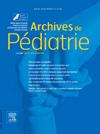Caregiver satisfaction with the use of continuous glucose monitoring and flash glucose monitoring in very young children with type 1 diabetes
IF 1.3
4区 医学
Q3 PEDIATRICS
引用次数: 0
Abstract
Background
New technologies for the management of children with type 1 diabete (T1D) are constantly and rapidly evolving. However, few real-life studies have been conducted, and rarely in the youngest patients (<6 years).
Aim
To study parental satisfaction with continuous and flash glucose monitoring devices in young children with T1D.
Methods
A questionnaire was completed by the parents of 114 children under the age of 6 years with T1D treated with an insulin pump followed-up in one of the hospitals of the French ADIM network between January and July 2020.
Results
One hundred and nine patients (96 %) were equipped with a glucose monitor and 95 % (104/109) of parents stated that they were satisfied or very satisfied with their child's monitoring device, with no significant difference in satisfaction rates between flash and continuous glucose monitoring. The parameter most strongly associated with satisfaction was confidence in the reliability of the device (p = 0.008). Parents who struggled to apply the device were significantly less satisfied (p = 0.024). In real-life use, 83 % of parents (90/109) used additional adhesives, 28 % reported mild skin reactions (30/108) and 39 % severe skin reactions (42/108), 50 % stated that applying the device was not painful, and 95 % found the device easy to apply. The most commonly reported unexpected difficulties were device malfunction (by 16 respondents), the device being too large and causing scarring (6 respondents), and lengthy calibration (6 respondents).
Conclusion
The vast majority of parents in this group of young children with T1D were satisfied with continuous or flash glucose monitoring. Satisfaction was strongly associated with confidence in the reliability of the device. Reported adverse effects such as skin reaction and difficulties attaching the device highlight the importance of data on real-life use.
照顾者对非常年幼的1型糖尿病儿童使用连续血糖监测和瞬时血糖监测的满意度
背景:儿童1型糖尿病(T1D)治疗的新技术不断快速发展。然而,很少有现实生活中的研究进行,而且很少在最年轻的患者中进行(目的:研究父母对T1D儿童连续和闪变血糖监测装置的满意度。方法:对2020年1月至7月在法国ADIM网络的一家医院接受胰岛素泵治疗的114名6岁以下T1D儿童的父母进行问卷调查。结果:109例患者(96%)配备了血糖监护仪,95%(104/109)的家长对孩子的血糖监护仪表示满意或非常满意,瞬时血糖监护与连续血糖监护满意率无显著差异。与满意度最密切相关的参数是对设备可靠性的信心(p = 0.008)。难以使用该设备的家长满意度明显较低(p = 0.024)。在实际使用中,83%的家长(90/109)使用了额外的粘合剂,28%报告轻微的皮肤反应(30/108),39%报告严重的皮肤反应(42/108),50%的人表示使用该设备并不痛苦,95%的人发现该设备易于使用。最常见的意外困难是设备故障(16名受访者),设备太大并造成疤痕(6名受访者),以及校准时间长(6名受访者)。结论:本组年幼T1D患儿绝大多数家长对连续或瞬时血糖监测满意。满意度与对设备可靠性的信心密切相关。报告的不良反应,如皮肤反应和连接设备的困难,突出了实际使用数据的重要性。
本文章由计算机程序翻译,如有差异,请以英文原文为准。
求助全文
约1分钟内获得全文
求助全文
来源期刊

Archives De Pediatrie
医学-小儿科
CiteScore
2.80
自引率
5.60%
发文量
106
审稿时长
24.1 weeks
期刊介绍:
Archives de Pédiatrie publishes in English original Research papers, Review articles, Short communications, Practice guidelines, Editorials and Letters in all fields relevant to pediatrics.
Eight issues of Archives de Pédiatrie are released annually, as well as supplementary and special editions to complete these regular issues.
All manuscripts submitted to the journal are subjected to peer review by international experts, and must:
Be written in excellent English, clear and easy to understand, precise and concise;
Bring new, interesting, valid information - and improve clinical care or guide future research;
Be solely the work of the author(s) stated;
Not have been previously published elsewhere and not be under consideration by another journal;
Be in accordance with the journal''s Guide for Authors'' instructions: manuscripts that fail to comply with these rules may be returned to the authors without being reviewed.
Under no circumstances does the journal guarantee publication before the editorial board makes its final decision.
Archives de Pédiatrie is the official publication of the French Society of Pediatrics.
 求助内容:
求助内容: 应助结果提醒方式:
应助结果提醒方式:


